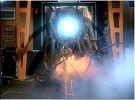The US alone should be out producing Japan by a factor of 3-1 by 1944. I just gave you the actual Allied production numbers for all allied planes produced in the game, and Japan out produces the US by over 10,000 planes and almost equals total allied production. Now take into account that about 3/4ths of allied production is obsolete for most of the game (or in Russia's case never gets used) and you have a disparity in production that is pure fantasy.
More like an 8:1 Us/Japan production ratio.
In regards to "historical" Japanese production, if we were to sharply limit Japanese production to only what was historical, we would be making the same mistakes the Japanese made IRL. I, for one, want a chance to avoid those mistakes if I can. So I want the ability to concentrate production in key areas. At least allow the increase of factory capabilities to 1944 levels and let imports decide the amount of prodcution possible.
I think the way to look at Japanese production for game purposes is to determine what was possible, not what was actually accomplished IRL. We have to assume a couple of what ifs for the moment. What if the US did not practise total submarine warfare? (Many allied players do not). What if the home islands were not bombed into rubble? (Most games don't get that far) What if the Japanese were able to bring in all the materials they needed? What would the capablity be then?
See, I believe that late war Japanese production is ultimately in the hands of the allied player. The Japanese player can expand all he wants but if he is not getting the oil and resources to the home islands to make the HI he needs, he can't produce anything and that expansion will become useless and will cost plenty of resources that he is going to need just to keep supplies flowing... if he can.
By the same token, US production in late 43 and early 44 was pretty close to maxxed out due to skilled manpower shortages. That is not to say they didn't have the resources or the room to expand, it is to say that manpower became the limiting factor. Now in mid-late 44, the US began drastic cutbacks in shipbuilding followed by other war materials. The longer it took to build something, the more likely it was going to be cut.
I do believe that the Allied player does get the short end of the stick on some production items such as with the Hellcat. I don't know how many actually served in the Pacifc but from the posts I've seen, it should be considerably more. I believe that something on the order of 20% of Hellcats were kept stateside for training, testing and research purposes. That still leaves quite a few that should available to the allied player. I am sure that there are other aircraft issues as well.
As far as pilot pools go, I believe that it should be tied to the loss rate and to the amount of supply found in the home islands. IRL, the Japanese greatly expanded their pilot training programs in 1943. This isn't reflected in the game. Tying it to supply or resources would have one good game effect. It would force Japanese players to keep more supply in the home islands. Basically whatever supply remained after all production and unit costs were taken into account, then whatever remained would decide the number of trained pilots and their quallity.
While we're on the subject. The one thing that pilot traing or production does not reflect in the game is the variability of production and training, especially in regards to Japan. The allied player also has a clear advantage in production because his production is not required to ramp up over a period of time. I hardly doubt that the US produced 144 Hellcats a month the moment they were released for production. The US player also doesn't have to worry about the conversion of factories producing obsolete aircraft to newer models. Its all invisible to the allied player.
My main point is that there are production issues on both sides of the fence and that it would be irresponsible to advocate fixing only one side while ignoring the other.
Chez









